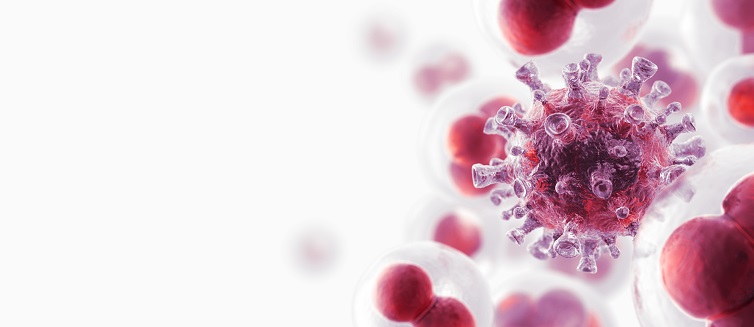Leukemia: Symptoms, Types, Causes & Treatments

Leukemia or blood cancer is a cancer of the blood and blood-forming tissues like the bone marrow and lymphatic system. It affects the ability of the body to produce healthy blood cells and results in uncontrolled proliferation of the abnormal blood cells. The two main blood cells involved are lymphocytes and granulocytes, based on which it can be widely classified into 2 main groups called
Acute leukemia- it has a tendency to be very fast growing, consists of immature cells or blasts cells and tends to worsen rapidly. It can further be categorised into two subtypes
Chronic leukemia - it has a tendency to be relatively slow growing, consists of mature cells along with some immature cells and generally takes a long time to worsen. It can also further be categorised into two subtypes
CAUSES AND RISK FACTORS
Leukemia is known to have a slightly higher incidence in males and generally tends to affect people of any age group; however particular types of leukemia have a higher occurrence in children like ALL, while others are more common amongst adults eg. CML, CLL, AML.
Although the exact cause of most types of leukemia are not known, there are multiple factors which have shown to increase the risk of its occurrence. The risk factors associated are
Other possible risk factors that are still being evaluated for its association with increased risk of leukemia are sedentary lifestyle, electromagnetic rays, western diet, sucralose, etc.
SIGNS & SYMPTOMS
Signs and symptoms associated with leukemia may differ depending on the type and age of presentation. Acute leukemia may generally present with early and severe symptoms like tiredness or weakness, frequent or severe infections, fever with chills or night sweats, generalised bone pain, undue loss of weight, easy bruising or bleeding, pale looking appearance, and shortness of breath.
Chronic leukemia, however may present late and with symptoms that are relatively milder like abdominal pain or bloating, fullness of the abdomen associated with discomfort, fever, swollen lymph nodes which are felt as mass palpable in the axillary region, neck or other parts of the body.
DIAGNOSIS
An evaluation of leukemia begins with a complete blood count, physical examination by a physician to look for enlarged spleen, liver and lymph nodes, peripheral smear, bone marrow aspirate and biopsy. Trucut or excision biopsies of the lymph node are done in some blood cancers like chronic lymphocytic leukemia. Imaging studies like chest X-ray, ultrasound abdomen, CT or MRI scans can also be done to check the involvement of nodes, spleen or other major organs.
Other specific tests called cytogenetic evaluation that is done in leukemia are
TREATMENT
Standard therapies for leukemia are based on the age, general physical condition, subtype of leukemia, individual risk stratification, chromosomal abnormalities and genetic mutations. The different treatment options available are
OUTCOMES
Although leukemia has been historically depicted to be associated with poor outcomes, the recent advances in diagnosis, newer personalised treatment strategies based on ones genetic profile, less toxic therapies associated with much lesser complications, multiple ongoing researches and leukemia based clinical trials, have greatly improved the overall survival and quality of life in leukemic patients giving them the much needed hope and strength to move forward.
